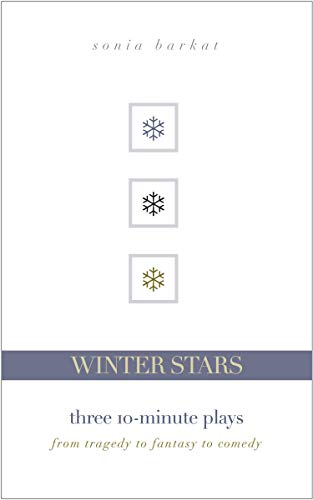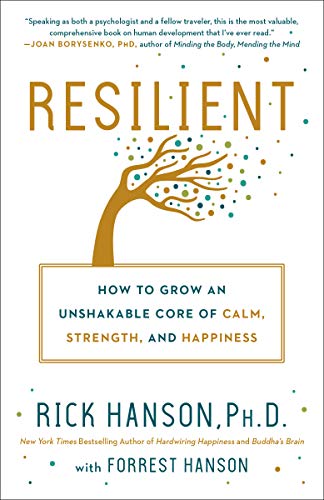This morning as I ate my breakfast, I was serenaded by the wren couple who have inhabited my nesting box all summer. After they fledged their last brood of three, I—thinking the nesting season over—scooped out the remains of their nest and cleaned the box with mild detergent. Now, I see they have once again stuffed the box full of sticks and branchy things—all the way to the top. It’s impossible for another creature to enter the small, round doorway with all this detritus in the way, and I, in an “aha” moment, understand they are reserving their spot for next season. I notice the male seems to use his song as an “all clear” to signal his mate it’s safe to emerge from the box and continue the search for more branchy barriers. Crafty, I think, as I pour my coffee.
Allaboutbirds.org describes the house wren as “a plain brown bird with an effervescent voice.” Indeed, his song is loud for one so small. This little guy can croon 600 songs an hour during mating season. I take a sip of coffee, close my eyes and allow his bubbly voice to enter into me.
I am practicing what Rick Hanson calls “staying with the moment.” While I cannot say if the neuroanatomy of my brain is changing, I can say that my morning has been infused with a sweetness I am grateful for. During the pandemic, time has been strange and I welcome anything that helps me recognize the gifts wrapped in these slow-moving moments.
Recognizing what’s true is one of the four main ways Dr. Hanson states we have of meeting our needs. It is true I am stuck in my house more than usual. It is also true that I have a wondrous songster living in my backyard.
“We meet our needs in four major ways: by recognizing what’s true, resourcing ourselves, regulating thoughts, feelings, and actions, and relating skillfully to others in the wider world.” When we apply these four ways to meet the three needs we all have—safety, satisfaction, and connection—twelve primary inner strengths emerge.
In this week’s book discussion of Rick Hanson’s Resilient: How to Grow an Unshakeable Core of Calm, Strength, and Happiness, we address the first path to meeting our needs: recognizing what’s true, and the three inner strengths associated with this.
Compassion
The journey to resilience begins with compassion, the first inner strength associated with recognizing what’s true. Hanson maintains that compassion begins with that for yourself because “recognizing your own deep needs and feeling moved to do something about them is the necessary first step.”
“Imagine treating yourself like you would a friend,” he says, and this rings familiar in my ears. Quite often I say this to my patients on the medical rehab unit where I work. “Pretend this is your spouse (daughter, son, grandson, best friend) sitting in this wheelchair. What would you say to them when they feel discouraged?”
It’s an attempt to move them toward empathy and compassion for themselves. And it’s not merely self-involved. Dr. Hanson says it’s “good to be good to yourself” because being good to yourself is good for others.
“When people increase their own well-being, they usually become more patient, cooperative, and caring in their relationships.” It’s true.
But how do you grow compassion?
“The key to growing any psychological resource, including compassion, is to have repeated experiences of it that get turned into lasting changes in neural structure or function,” says Dr. Hanson.
He urges us to pay attention to when we have a feeling of self-care, and then stay with the experience for a few extra moments, “feeling it in your body, sinking into it as it sinks into you.” Just as I did with my little house wren serenade.
Hanson gives three specific ways of growing compassion for yourself: making a deliberate effort to be compassionate to yourself in pain; accepting things as they are—including yourself; and enjoying life. Then he gives exercises to assist in these areas.
Mindfulness
Mindfulness is the second inner strength associated with recognizing what’s true. I tell my patients that the term “mindfulness” is a fancy way of saying “stay in the present moment” instead of ruminating about the past or worrying about the future. Hanson points out that it’s easy to remain mindful when things are calm in life. It’s during difficult times that mindfulness becomes challenging. He guides us through a simple meditation to help steady attention and reduce distraction. Dr. Hanson stresses that it takes making mindfulness a regular part of your life to strengthen it.
Dr. Hanson explores three ways to guide your awareness toward mindfulness: be with what is there, decrease the negative and painful, and increase what is positive and enjoyable. A lot can be said about each one of these, but I love the illustration Hanson uses to drive the concepts home.
“Imagine that your mind is a garden. You can tend to it in three ways: observe it, pull weeds, and plant flowers.”
Learning
Learning is the final inner strength related to recognizing what’s true. Hanson notes that “about a third of our attributes are innate in our DNA, while the other two-thirds are acquired through learning.” He suggests we take advantage of this formula by using learning to influence who we become.
“Any kind of learning involves a change in neural structure or function. These changes occur in two stages, which I call activation and installation. In the first stage, activation, there is an experience, such as feeling liked. All experiences—all thoughts, sensations, daydreams, worries, and anything else passing through awareness—are based on underlying neural processes. A particular experience is a particular state of mental/neural activity. Then in the second stage, installation, this experience is gradually consolidated in long-term storage in the brain. Over time, passing states become installed as lasting traits.”
I don’t know about you, but the idea of deliberately making positive changes in my brain is an exciting prospect for me.
Dr. Hanson gives us a handy acronym for the steps involved in guiding these changes: HEAL.
Have a beneficial experience: Notice it or create it.
Enrich it: Stay with it, feeling it fully.
Absorb it: Receive it into yourself.
Link it: Use it to soothe and replace painful, harmful psychological material.
Dr. Hanson provides some exercises and resources to help us walk through these steps and identify inner strengths personally matched to our challenges. Using our garden analogy from earlier, Hanson likens this process to “using flowers to pull weeds.”
There is much to ponder from this first section of the book. This portion lays down the basic neuroscience behind growing more resilience and gives a good foundation on which to build skills necessary to make these changes. Next week we move on to part two of Resilient: Resourcing.
Discussion:
1) Did you try any of the exercises Dr. Hanson includes in the book? If so, will you share your experience with us?
2) How has recognizing what’s true around you changed the way you look at your world this week?
3) Let’s practice staying with the moment in the coming week. Try to make note of the ways you do this and share with us in next week’s post.
Here’s the book club schedule:
August 12: Part One: Recognizing
August 19: Part Two: Resourcing
August 26: Part Three: Regulating
September 2: Part Four: Relating

Photo by Jim Sorbie, Creative Commons license via Flickr. Post by Laura Boggess, author of Waiting for Neruda’s Memoirs.
- Year of the Monarch—A Visit to Craik-Patton House - September 18, 2024
- Year of the Monarch: Butterfly Dreams - March 20, 2024
- Year of the Monarch: Harvesting and Planting Milkweed Seeds - November 15, 2023


L.L. Barkat says
I absolutely love how you unfolded this for us. I’m thinking… a little bowl on the breakfast counter or dining room table… where we draw out one of these each day and do it individually and even as a little circle of three.
So, for example…
a little card in the bowl that says: observe the garden of your mind. what do you see?
another: pull a weed from the garden of your mind
another: plant a flower in the garden of your mind
Btw, I took this to a concrete level this morning and actually picked some beautiful black-eyed Susans and put them on the counter where my girls eat their breakfast. Sometimes we can help plant a garden in someone else’s mind, through a simple act of unexpected beauty and love. 🙂
Thanks for leading us in this, Laura. So vital.
laura says
Yes! I’m finding that as I pursue these strategies, I am more inclined to do the same. Something about working on shaping my mind for the better is spilling out into my immediate environment. Maybe I’ll pick some flowers for my table today too :).
I love your idea of using the bowl to share the gardening of the mind. That simple analogy really helped me internalize these concepts. Isn’t it a lovely illustration?
L.L. Barkat says
It *is* a lovely illustration. Other things could be added to the bowl, too—all based on the principles and images you’re sharing.
More cards… and these could be used as look-backs or prompts to try as go-forwards:
• what are you needing to accept today? (or change, if you can’t accept)
• how were you compassionate to yourself today?
• what joys have you had today?
• what beneficial experience did you notice or create today?
• was there a moment you stayed fully with something today?
• what did you receive into yourself today?
• did you use a joy to replace a sorrow today?
laura says
Yes, yes, and yes! Such fun possibilities. I love how your mind works, Laura.
Laura Lynn Brown says
The word “compassion” keeps coming up on my radar this year — the way we start seeing something everywhere once we’re attuned to it. (Also the words “reconciliation” and “disruption,” but I digress.)
The advice to imagine treating yourself as you would a friend has been useful for me. Strangely, while it’s a bit of dis-integration — here I am, outside myself, imagining what I’d say to or do for a friend — it also makes me feel companioned, promotes action, and perhaps somehow re-integrates. Here I am, seeing what needs to be done, stepping in and washing those dishes. And here she is / I am, taking over, grateful for that bit of momentum. For that kindness.
L.L. Barkat says
I like the way that makes us sound like a companion to ourselves. Which we really can be. 🙂
laura says
At times, I have found it trickier to have compassion for myself than others, just as Dr. Hanson says. I love that Andrew Peterson song, “Be Kind to Yourself” because it gives me a melody that is a gentler reminder than my own self-reproach. It does take practice, though, and, as I find with my patients, a coach is helpful too. I like the image of standing outside oneself–beside oneself–yes, as a good companion in this.